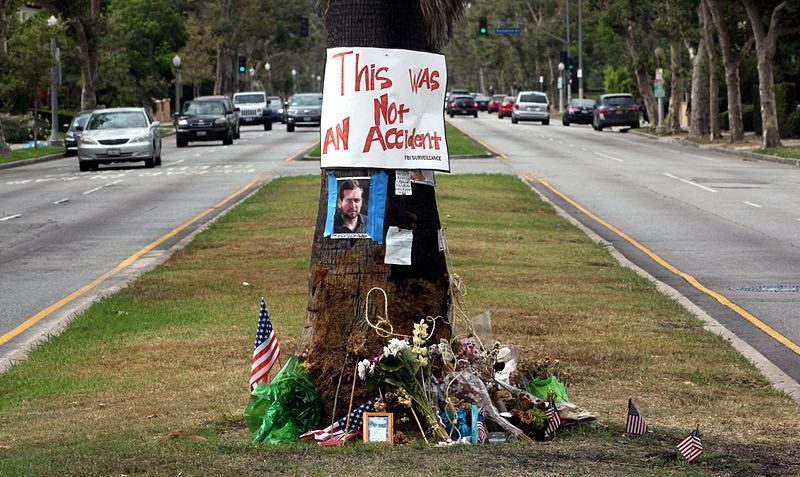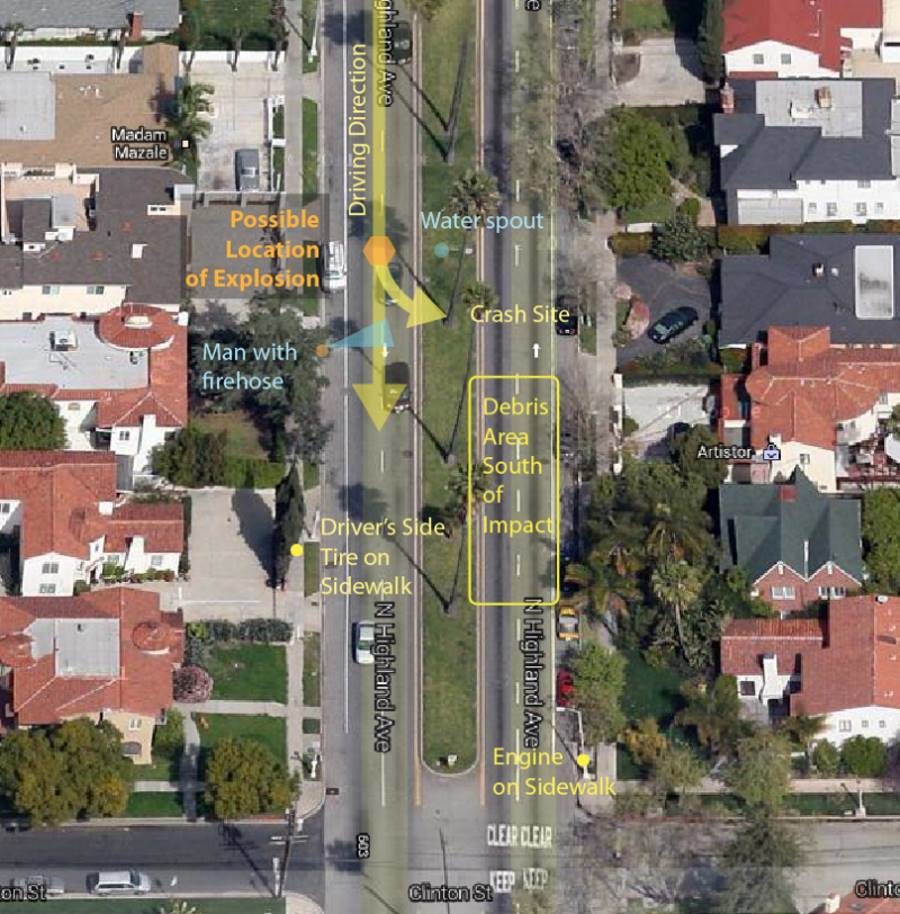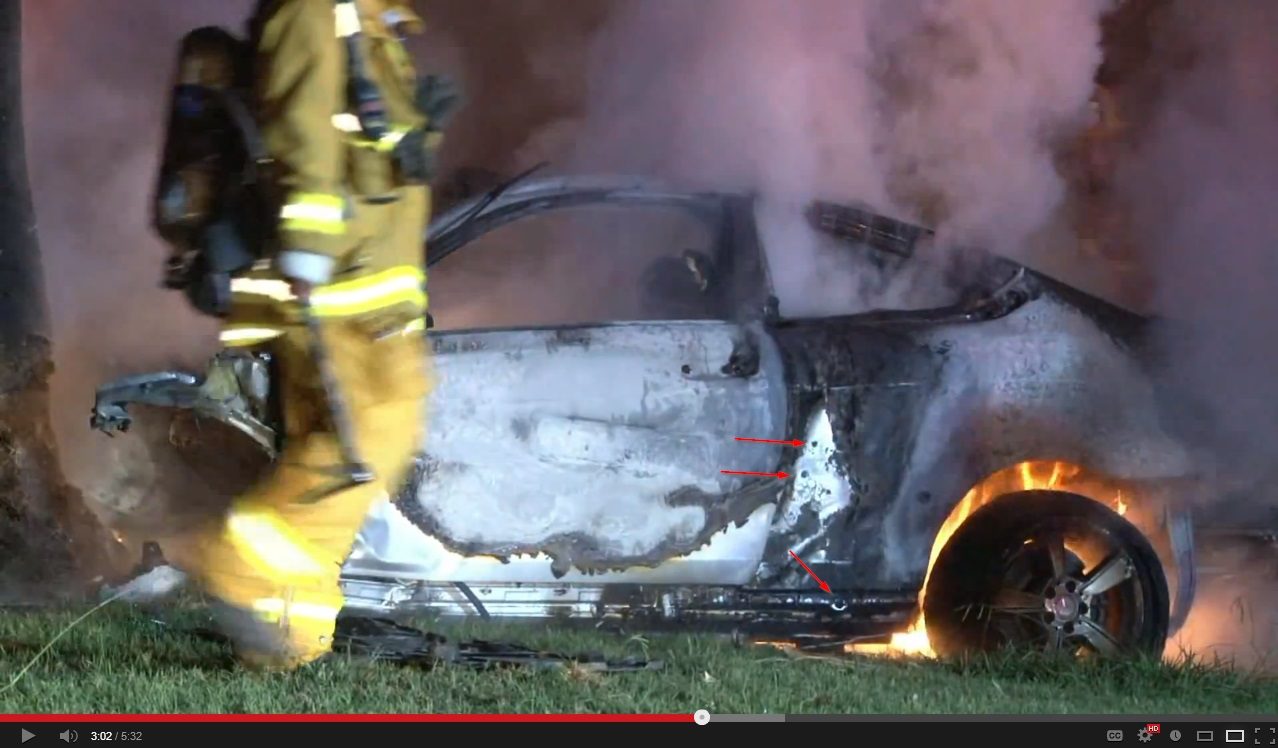
© Lord Jim/FlickrMemorial at crash site of journalist Michael Hastings
Michael Hastings was one of America's most popular modern journalists, perhaps best known for his 2010
expose in
Rolling Stone magazine, "The Runaway General", which led to the resignation of General Stanley McChrystal, then commander of NATO forces in Afghanistan.
In the early hours of June 18, 2013, a vehicle purported to have been driven by Michael Hastings
crashed in Los Angeles, thus snuffing out the life of an already prolific young talent whose best years were still ahead of him. And that is where the worst part of this tragedy begins: the death of Michael Hastings, despite him being an influential member of the journalistic community, was never given the thorough investigative approach it rightly deserved.
This article will not go into all of the details of Hastings' life, since much of that is already known. Suffice it to say that the author probably had just as many enemies - many of them high-ranking officials - as he had friends. Ruining the career of an Army general, while declaring on one occasion that the media should
"declare war" on the government, has a tendency to do those things. On top of that,
Wikileaks reported that Hastings had contacted them just hours before his death, saying he was under investigation by the FBI. The federal agency, however, denied the claim. Those bits of information were enough for many people to frame his premature and very violent death as some sort of premeditated murder.

© Associated PressMichael Hastings, journalist
On the other hand, maybe Hastings was never actually killed on the morning of June 18, 2013. I understand that idea will probably sound outrageous, but once one compares the information contained in Hastings'
autopsy report with the observable evidence from the crash that possibility appears more plausible. More on that in a moment.
First, let's consider the crash itself. On the early morning of June 18, 2013, Hastings reportedly plowed his car, a Mercedes C250 coupe, at a high rate of speed into a palm tree on a median strip in Los Angeles. The collision was so severe, the official story goes, that it threw the engine and transmission over 100 feet from the point of impact.
How many times have you heard or seen such a thing? Many people have already speculated at length about that little feat of physics, especially since we are talking about a German-engineered car ranked as one of the safest in the world.

Location of crash and debris
Although it may not be outside the realm of possibility that a crash could produce such a fantastic motor hurl,
it sounds to be more consistent with an explosion. Indeed, witnesses reported hearing explosions prior to the crash. Automotive journalist Jack Baruth
wrote, "I've seen dozens of cars hit walls and stuff at high speeds and
the number of them that I have observed to eject their powertrains and immediately catch massive fire is, um, ah, zero. Modern cars are very good at not catching fire in accidents."

The front half of Hasting's car is missing, not wrapped around the tree as in a 'normal' collision.
On the chance that Hastings' death was engineered, Baruth said, "I can't say it's totally unlikely."
Baruth echoes the opinion of former US National Coordinator for Security, Infrastructure Protection, and Counter-terrorism Richard Clarke, who
told The Huffington Post that what Hastings' crash is
"consistent with a car cyber attack."This is where the rubber on this story hits the road, so to speak. Although many people were content to believe that Hastings had perished in a horrific car accident, as duly reported in the news media, how many media consumers took the time to watch the video showing the fiery aftermath? To quote Baruth again, the vehicle was consumed by an inferno "with the fury of a thousand suns." Now, when you get auto writers to start sounding like Shakespeare, you know it must be something fantastic. And it is.
As fate would have it, on the morning of Hastings' fatal smashup, a photojournalist from a news company called Loud Labs, just happened to be a few blocks from where Hastings wrapped his Mercedes around the now-famous palm tree.
In the video we see the photojournalist from Loud Labs approaching the accident from quite a distance in his car. Taken together, no less than 20 minutes elapses before we see firefighters arrive on the scene to finally extinguish the inferno. Before the fire trucks even arrive, however, a neighborhood resident can be seen futilely attempting to douse the flames with a garden hose. He may as well have been spraying the flames with kerosene judging by the effect. In other words, the fire, to quote Baruth, really did have the intensity of "a thousand suns."
Now ask yourself this question: Could anything have survived such an intense blaze? How long would it have taken, given its extremity, to totally obliterate everything that was not metal inside of the car? My non-professional hunch when examining the video is about 30 seconds - tops. But remember, this fire burned like a star for at least 20 minutes. Thus we can safely say that not only the vehicle's interior, but the driver as well, should have been completely obliterated.
Yet when we look at the
autopsy report, however, one gets the impression that the car suffered minor damage due to fire. In reality, it was scorched down to bare metal.
The very first paragraph of the autopsy report reads: "On 06/18/13 at approximately 0452 hours, a call was received from Officer Jeter #30513 with LAPD-West Traffic Division, reporting the death of an unidentified male, who was involved in an 'auto vs. tree' collision. He was pronounced at scene."
Despite Hastings' huge stature as a writer, he was diminutive in person, standing less than 5 foot 2 inches and weighing 140 pounds.
Given that the automobile was engulfed in flames, and the body charred beyond recognition within a matter of seconds, how was it possible for the first officers on the scene to know whether the victim was male or female, especially given Hastings' height and weight?It gets better. Despite this all-consuming inferno, it is written in the Investigative Narrative section that the clothing Hastings had apparently worn that day were visible, as well as other surprises: ""His clothing was severely burned, with decedent appearing to have worn a blue shirt and brown pants, with a white sock and black/gray tennis shoe observed to the left foot...Decedent's wallet (intact) was found in his rear pants pocket, assisting in tentative identification."
In order to fully appreciate that paragraph, watch the video again and then ask yourself what sort of clothing or pocket accessory could have possibly survived that. And we are supposed to believe that "tentative identification" on the decedent was made through the "intact" wallet in his back pocket.
Were the wallet and blue jeans constructed of titanium? Meanwhile, throughout the autopsy, the body is discussed in such a manner that appears totally inconsistent with what is seen on the video(s).
"The body is that of a white male with moderate charring. The charring is over the left side of the body while on much of the right side ... the skin is white and pale. I don't see any tattoos, scars or identifying marks. The clothing with the body is consisting of upper body garments which are all torn up and just lying on top of the body and the right half of a pair of trousers which are still on the right leg. Also some sneakers..."
Was Michael Hastings, like the fictional reporter Clark Kent in the Action Comics, really Superman in disguise? The world may never know.
With enough access to those computers one can make these cars do herculean things if you totally throw caution and safety to the wind.
One can make the power output substantially higher for limited time spans,Alter braking and steering ability and can easily cause this sort of accident.
Princess Dianna took a similar ride,And was riding in a car with these same sorts of systems under computer control.
Once is a Hmmmm event Twice is a series.
I know a Mercedes Benz auto has remote computer systems interfaces that can access and install per session refinements to the hard coded programs installed in the chassis. That system can do a vast amount to alter the operation and control ability of any vehicle it is running in.
Drive a Mercedes Benz.... Beware.... And Don't piss off your dealership manager, You might eat an airbag or visit a tree at high speed.